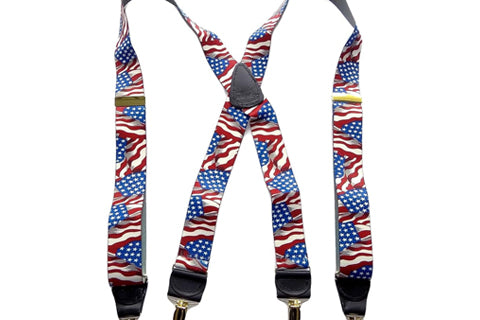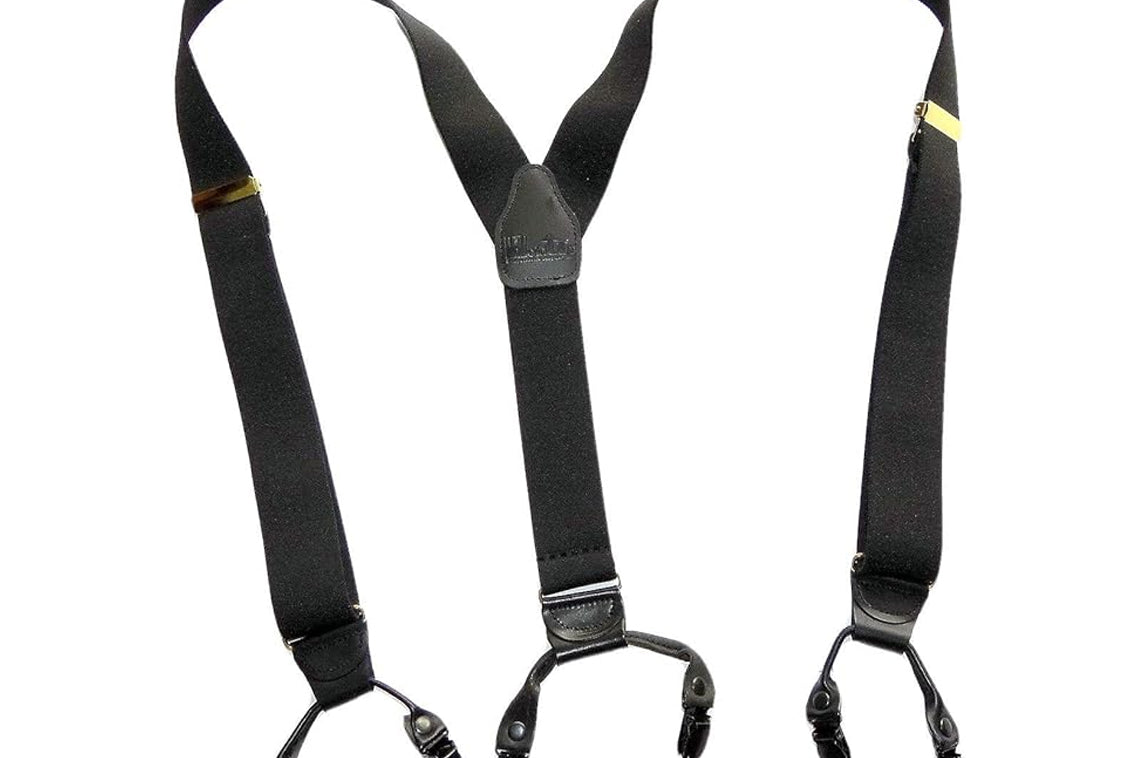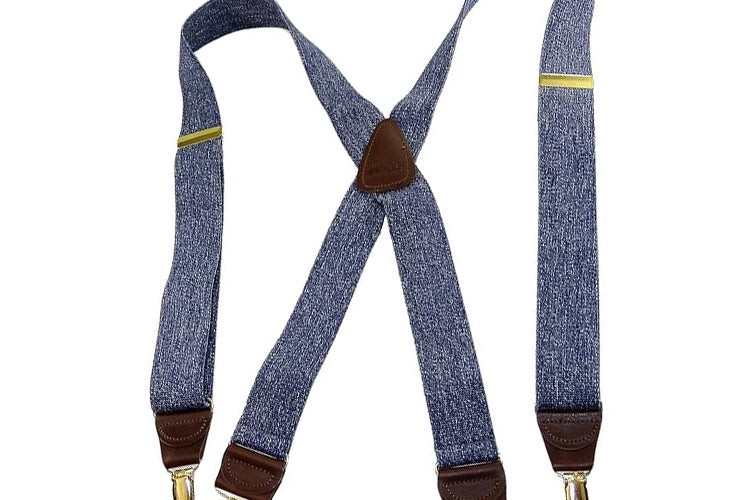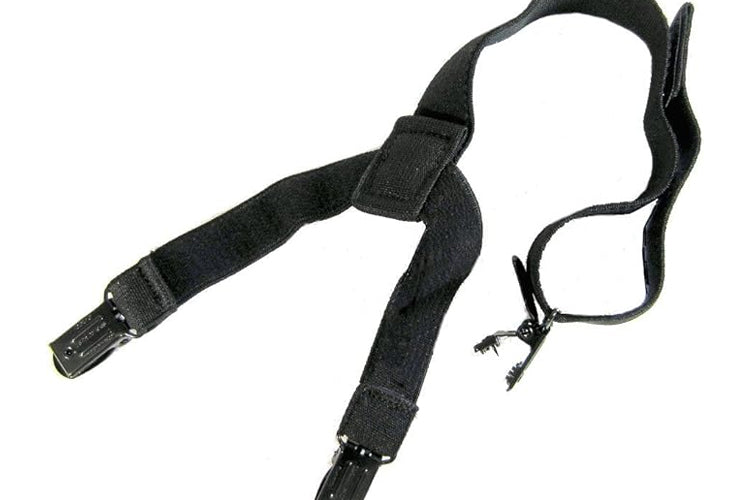Embarking on a mountain adventure or a trekking spree requires detailed planning, ensuring every piece of gear enhances your outdoor experience. When it comes to keeping your pants or shorts in place during a hike, many people face the dilemma of choosing between suspenders and belts. Both are essential accessories in the world of hiking. But which one works best for you? Let's find out the answer!

Secure Your Hike with Ski Ups X-back HD Suspenders
What are Hiking Suspenders?
Primarily found in specialized outdoor stores, hiking suspenders are straps worn over the shoulders, designed to hold up pants. Most often made of elastic, these accessories usually clip onto the pants' waistband or button loops.
Advantages Of Hiking Suspenders
- Even Weight Distribution: They distribute the weight of your pants and any items in your pockets evenly across your shoulders. This feature is crucial, especially when trekking with heavy tools or accessories in your pockets.
- No Pressure Points: Unlike belts, suspenders ensure no pressure points around the waist, a feature many hikers search for, especially those who pair their pants with a hip sack or rucksack.
- Adjustability: These accessories can be adjusted to fit perfectly, ensuring your pants stay in place throughout your trekking or walking adventure.
- Breathability: Offering better airflow around the waist, suspenders can stop excessive sweating during intense mountain hikes.
Disadvantages Of Hiking Suspenders

- Interference: For backpacking enthusiasts, suspenders might interfere with rucksack shoulder straps, making the experience cumbersome.
- Attachment Issues: Depending on the pants' design and the quality of the clips, suspenders can sometimes detach, especially if not securely fastened.
What are Hiking Belts?
Belts are the traditional clothing accessory that has been the go-to choice, and many people choose to wear a belt with suspenders. They encircle the waist, fastened through a buckle system, providing support and preventing pants from sagging.
Advantages Of Belts

- Simplicity: Easy to use, belts are the staple accessory in many hikers' wardrobes. Slide it through the loops, fasten, and you're set for your nature walk.
- Versatility: Many of the best hiking belts come equipped with features such as hidden pockets or multifunctional buckles.
- Style: Aligning more with the traditional hiking attire, belts resonate with many trekkers' personal styles.
- Stability: With the right fit, belts offer consistent support, especially beneficial when climbing or navigating challenging terrains.
Disadvantages Of Belts

- Pressure Points: When paired with a daypack or fanny pack, belts can create pressure points, reducing comfort.
- Adjustment Limitations: Some belts might not fit perfectly, becoming either too tight or too loose.
- Limited Breathability: During intense hikes, belts can cause more sweating around the waist.
Factors to Consider When Making Your Choice
Choosing the right gear is essential for ensuring a comfortable and successful hike. Here are some important factors to think about before you make your decision between hiking suspenders and belts:
Duration of Your Hike
If you're planning a longer journey through the wilderness, outdoor suspenders for hiking might be the better option due to their ability to distribute weight evenly across your shoulders. This is especially helpful when you're carrying a heavy load in your pockets or backpack. However, for shorter trips, a lightweight hiking belt may be a more practical option, offering simplicity and ease of use without any unnecessary adjustments.
Backpack Style & Comfort
Consider the type of gear you’ll be bringing with you, like a daypack, hip sack, or rucksack. Depending on the style of your pack and the weight you’re carrying, the best hiking suspenders or a hiking pants belt might be better suited to your needs. For example, suspenders for hiking can offer more freedom of movement, but they may interfere with your backpack straps. Alternatively, a hiking belt could work well with your trekking pants if you're focused on a snug fit and stability.
Personal Comfort & Fit
Comfort is key when you're trekking for hours or exploring remote areas. Some hikers prefer the adjustable comfort of suspenders, while others may find a hiking belt more in line with their preferences. When choosing between hiking belts and suspenders, consider how they feel when you're in motion. Ensure the size and fit of your suspenders and belt align with your body type, as discomfort can significantly impact your hiking experience. Look for options with a variety of sizes and colors to match your personal style and the conditions you’ll encounter.
Weather & Ventilation
In warmer climates or during intense summer hikes, you might appreciate the breathability that hiking suspenders offer. They allow for more airflow around the waist, reducing the likelihood of excessive sweating. In contrast, a hiking belt can sometimes trap heat, especially if made from materials like nylon or leather. If you're heading out on a long trek through hot environments, lightweight hiking suspenders might give you an advantage.
Gear Compatibility & Additional Features
When selecting hiking suspenders or a belt, consider the additional functionality the product offers. For example, some hiking belts are designed with extra features, such as hidden pockets for carrying small essentials like a phone, a map, or energy bars. For those who rely on their belt loops, be sure to select a hiking belt with a sturdy buckle that can accommodate all your gear needs without putting unnecessary pressure on your waist. On the other hand, suspenders often come with hooks or clips that can securely attach to your pants or shirt, offering versatility for different types of outdoor apparel.
Final Thoughts
Whether it's the charm of suspenders or the traditional appeal of belts, remember that these gear pieces are designed to enhance your comfort in the outdoors. The choice between them might seem trivial, but as experienced members of hiking communities would attest, small details can be game-changers in the great outdoors.
As the world of hiking gear continues to evolve, what innovative solutions might we see on the market? For now, make your choice based on personal preference, and enjoy your time in nature. Happy hiking!
Frequently Asked Questions On Hiking Suspenders Vs. Belts
Do suspenders Fit All Types Of Hiking Pants?
Are There Hiking Belts That Can Store Gear?
Can I Wear Both Suspenders And A Belt During A Hike?





